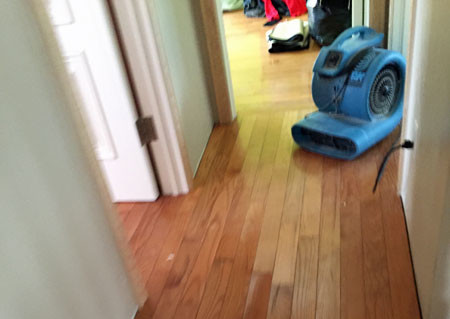- BY mert
- POSTED IN blog
- WITH 0 COMMENTS
- PERMALINK
- STANDARD POST TYPE

Flood damage clean up doesn’t end with pumping out the standing water. Far from it. A surprisingly large amount of water has soaked into every crack, crevice, and porous material where it can linger for weeks or even months while causing damage in a matter of just a few days. Professional water damage restoration is a must.
Water Extraction
Your first thought, especially for a soaked carpet at your home or business, might be to grab a shop wet-vac and do it yourself. But that’s simply not enough. Professional extraction equipment removes nearly twice as much water. With that, it may not be necessary to pull back the carpet and pad to speed drying. Other building surfaces also need thorough extraction, as wetness wicks up and penetrates deeply into walls well above the water line. Most importantly, professional water extraction can cut all-important building dry out time by one to several days.
Rapid Structural Drying is Critical
You’ll still have lots of remaining moisture. As anyone who’s ever had a mold problem knows, even a little excess moisture can lead to big problem very quickly. Under the right conditions a major mold problem posing health hazards and damaging building materials can occur in less than a day. Besides mold, remaining moisture can cause
- the growth of fungus and bacteria
- warped subfloors
- buckled wood flooring
- warped wood trim such as baseboards and door frames
- delaminated flooring and wall paneling
- swelling and disintegrated sheet rock
- warped and split framing
- corroded wiring and more
in just a couple of days. If neglected, you may face rotted wood and significant structural problems.
So any flooding is an emergency, requiring for 24/7 response and the fastest and most thorough water extraction and building dry out as possible.
Special Equipment Speeds the Process
Open windows and exhaust fans just don’t cut it, especially in Staten Island’s climate. That can be true even for seemingly minor tub or toilet overflows. By the time you realize it’s not enough, you already have additional water damage.
Evaporation is the bottleneck in getting moisture out from where hundreds of gallons can be hiding deep within walls and flooring as excess moisture. But running central heating or cooling will distribute mold spores throughout the home or business, and improperly used heating equipment can speed the growth of mold, bacteria, and fungi. Anything other than electric heaters actually add humidity, and you need to avoid the temperatures that microbes like best. It’s important to lower indoor humidity to below 40% as quickly as possible.
That’s why we use the latest in refrigerant dehumidifiers and other specialized structural drying equipment to balance temperature and humidity, with a focus on where drying is needed the most. Combined with high-volume air movers we can cut several days off the structural drying time, getting your building ready for your return in just 3 to 5 days and heading off many potential problems from water damage.
Remember, pumping out water and drying off surfaces isn’t enough. To avoid health issues and secondary damage it’s vital to extract as much water as possible and then use state of the art structural drying techniques to thoroughly dry out all building materials, removing excess moisture from deep inside walls and floors.

